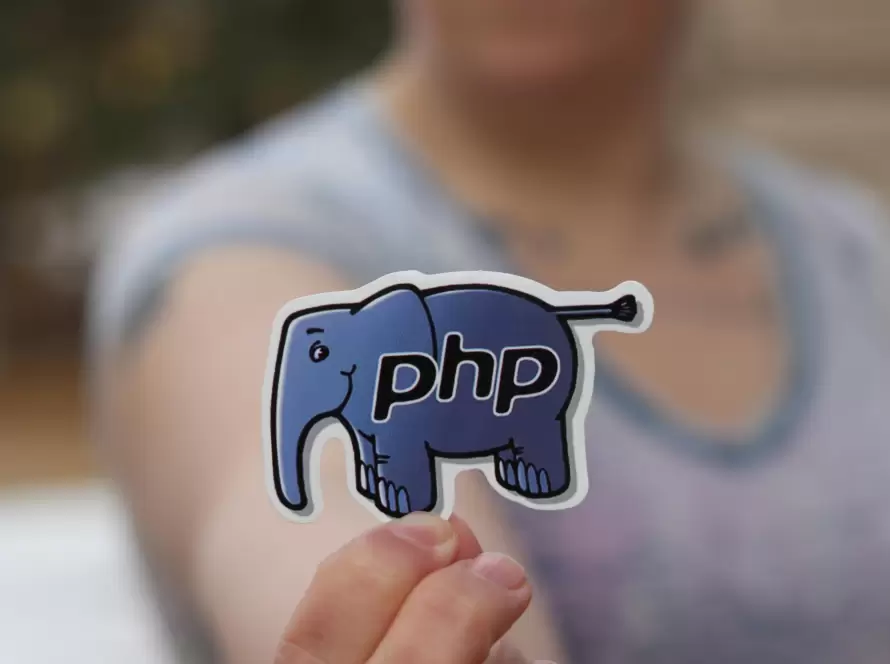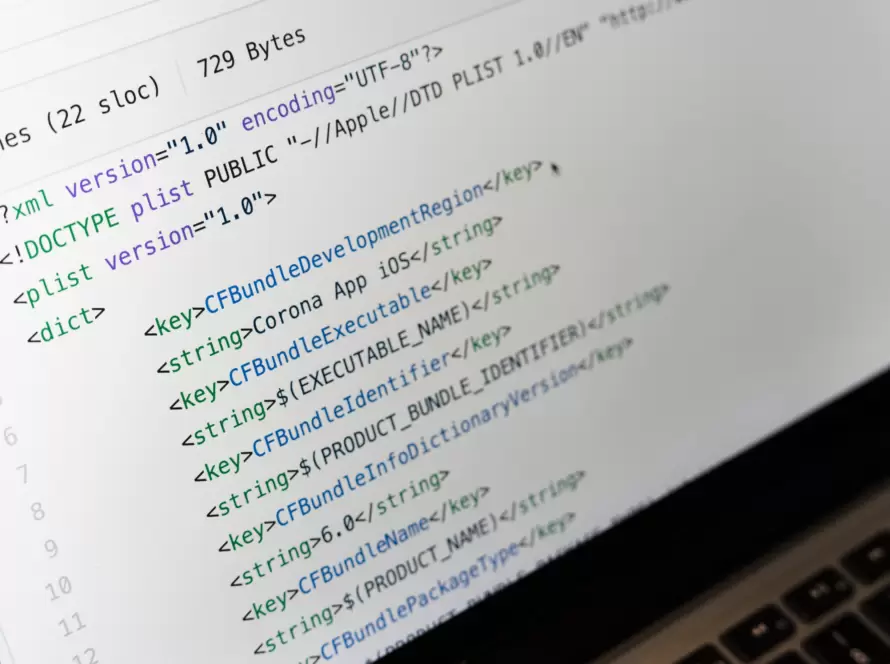Generated by Contentify AI
- Introduction
- The Basics of PHP
- Understanding PHP Syntax
- Declaring Variables in PHP
- Variable Types in PHP
- Assigning and Manipulating Variables
- Using Constants in PHP
- Variable Scope in PHP
- Best Practices for Naming Variables
- Conclusion

Introduction
Welcome to the basics of PHP syntax and variables! PHP is a popular and versatile programming language used by developers around the world. It is a powerful language, but the basics are fairly easy to understand. In this blog, we will cover the syntax of PHP and introduce the concept of variables.
Syntax is the grammar and structure of any programming language. It is the foundation of coding and allows programmers to write code that is both effective and efficient. Knowing the syntax of PHP is essential for writing code that works properly and accurately. It helps you organize your code and make it easier to read and understand.
Variables are used to store values. They allow us to store data in a program and then use it later. Variables are also used to give a name to a piece of data so that we can refer to it later in our code. Variables are a powerful tool in programming, as they allow us to store and manipulate data.
By understanding the syntax of PHP and the concept of variables, you can quickly become comfortable with writing PHP code. As you continue to learn more about PHP, the syntax and use of variables will become second nature. Hopefully, this blog has helped you get started on the basics of PHP syntax and variables!
The Basics of PHP
When it comes to creating a dynamic website, PHP is the go-to language for many web developers. A versatile programming language, PHP is easy to learn and can be used to create powerful and interactive websites. Understanding the basics of PHP is essential for creating successful websites.
The Basic Syntax and Variables in PHP section provides a thorough overview of the fundamentals of PHP. This section begins by introducing the reader to the basic syntax of PHP: variables, operators, and control structures. It then moves on to discuss the different types of variables in PHP, such as strings, integers, booleans, and arrays. It explains how these variables are used and how they interact with each other.
The section also covers the use of functions and classes. It explains how to use functions to create efficient code and the importance of using classes to keep the code organized and maintainable. It also includes a few examples of how to create classes and use them to create powerful web applications.
Ultimately, the Basic Syntax and Variables in PHP section is a comprehensive introduction to the fundamentals of PHP programming. It is essential for any web developer looking to understand the basics of PHP and create websites that are interactive and powerful. With a better understanding of the basics of PHP, any web developer can create websites that are successful and engaging.
Understanding PHP Syntax
In order to understand the basics of PHP Syntax, it’s important to understand the fundamental structure of PHP. The syntax of PHP is based largely on C, an old and popular programming language. PHP utilizes various C-based coding practices, including braces ({}) for grouping code, semicolons (;) to terminate lines, and the same operator precedence. Although it is possible to write an entire program in any programming language without understanding the syntax, understanding the syntax makes coding much easier.
The most essential aspect of PHP syntax is the use of variables. Variables are used to store data, and can be of different data types. For example, a string is a sequence of characters, while an integer is a whole number. By understanding the different data types, you can use the correct type of variable for the correct purpose.
Another important aspect of PHP syntax is basic control structures. Control structures are used to direct the flow of the program. For example, if statements will execute different code depending on whether a certain condition is true or false. Other control structures include for and while loops, which can be used to execute a set of instructions multiple times.
Finally, understanding PHP syntax also requires knowledge of functions. Functions are blocks of code that can be called upon to perform a specific task. For example, a function can be used to calculate the average of a set of numbers, or to generate a random number. Knowing how to write and call functions is essential for programming in PHP.
In summary, understanding the basics of PHP syntax is critical for programming in the language. Knowing about different data types, control structures, and functions will make coding in PHP much easier, allowing you to create more complex and powerful programs.
Declaring Variables in PHP
When coding in PHP, it is important to understand how to declare variables. Declaring a variable simply means that you are creating a named memory space where you can store a value. With PHP, you can declare a variable by simply giving it a name, followed by the equals sign (=), and then the value you would like to store.
The value you assign can be anything from a string, integer, float, boolean, array, or even an object. For example, when declaring a string variable, you might create a variable called “name” as follows: $name = “John Smith”.
Once declared, you can use the variable’s name to access its value. This is often referred to as variable interpolation, where a variable is placed inside a string and its value is printed out in place. For example, echo “Hello $name”.
When declaring variables in PHP, it is important to remember that all variable names must begin with a dollar sign ($), and are case sensitive. For example, if you create a variable called $name, it can not be accessed via the variable name of $Name, as that is a different variable.
Finally, PHP also allows for variable variables, which means that a variable can be assigned the value of another variable. To do this, you would set the variable to the name of the variable you wish to access. For example, $variable1 = “name”; $name = “John Smith”; echo $$variable1; // Outputs “John Smith”.
By understanding how to create and access variables in PHP, you can save and access data quickly and easily.
Variable Types in PHP
PHP is an incredibly powerful programming language. It is the language of choice for web development and server-side scripting, and it is used by millions of developers around the world. One of the key features of PHP is the ability to create and manipulate variables. Variables are the building blocks of programming, and understanding the different kinds of variables available in PHP is essential for any programmer.
In PHP, there are several different types of variables. The most common types are integers, floats, strings, booleans, and arrays. Integers are whole numbers, while floats are numbers that include a decimal point. Strings are pieces of text, which can be enclosed in single or double quotes. Booleans are logical values that can either be true or false. And arrays are complex data structures that contain multiple values.
Besides these basic variable types, PHP also supports specialized types such as objects, resources, and NULL values. Objects are instances of classes, which are like templates that define how an object should behave. Resources are pointers to external resources, such as database connections or file streams. And NULL values represent an undefined value.
Understanding these variable types is essential in order to create effective and powerful code in PHP. Knowing when and how to use the various types will help you to write better code and more expressive programs. With a good grasp of the basics of PHP and its variable types, you can begin to explore the possibilities of web development and build amazing websites and applications.
Assigning and Manipulating Variables
When writing in PHP, it is important to understand the basics of assigning and manipulating variables. Variables are containers for storing values and can be used to store data such as strings, numbers, and Boolean values. Variables can be declared with a dollar sign followed by the variable name, and they can then be assigned a value using the assignment operator (=). For example:
$myVariable = ‘Hello World’;
This will assign the string value ‘Hello World’ to the variable $myVariable.
Variables can then be manipulated in various ways. For example, you can use the addition operator (+) to add two numbers together and assign the result to a variable:
$total = $value1 + $value2;
In the same way, you can use the subtraction (-), multiplication (*) and division (/) operators to subtract, multiply and divide two numbers, respectively. You can also use the concatenation operator (.) to merge two strings together and assign the result to a variable:
$mergedString = $string1 . $string2;
In addition to the basic arithmetic and string manipulation operations, you can also use PHP’s built-in functions to manipulate variables. For example, the str_replace() function can be used to replace a certain value within a string and assign the result to a variable:
$replacedString = str_replace(‘Hello’, ‘Goodbye’, $myVariable);
As you can see, understanding and using variables is an essential part of working with PHP. With a good understanding of how variables work and how to manipulate them, you will be able to create powerful and dynamic scripts that can be used to create powerful web applications.
Using Constants in PHP
When writing code in PHP, it is important to understand the basics of syntax and variables. Two of the most important structures that make up the syntax of the language are constants and variables.
A constant is a name associated with a value that cannot change during the execution of a program. The most common type of constant is a named constant, which is created using the define() function. This function takes two arguments, the name of the constant and the value it is assigned to. Once a constant has been defined, it cannot be changed or undefined as long as the script is running.
Variables are simply names associated with a value that can be changed during the execution of a program. They can be created using the $ symbol. Variables can be used to store data that will be used during the course of the program.
The main difference between constants and variables is that constants are associated with values that cannot be changed, while variables are associated with values that can change. This can be very useful when writing code as it allows you to create sections of code that will always contain the same value, while other sections of code can have values that are changed based on user input or some other criteria.
It is important to remember that when using constants and variables, it is essential to use descriptive names that make it easy to understand what type of value is being stored. This will help to make the code easier to read and maintain.
Variable Scope in PHP
When programming in any language, it is important to understand variable scope. In PHP, a variable’s scope refers to its visibility within your code. This means that when you declare a variable in one part of your code, that variable may not be accessible to other parts.
To understand variable scope in PHP, it is important to understand the different types of scope. The two main types of scope in PHP are global and local. A global variable can be accessed anywhere in your code, while a local variable can only be accessed within its scope.
For example, if you declare a variable within a function, it is only accessible within that function. In order to access the variable outside of the function, you must declare it as global. This allows you to use the variable within other parts of your code.
It is also important to consider that variables declared within a function have a different scope than variables declared outside of a function. Variables declared outside of a function are accessible within the function, but variables declared within a function are not accessible outside of the function.
In conclusion, understanding variable scope in PHP is important for writing efficient and effective code. Being aware of the different types of scope and how to access variables within and across different scopes can help you write better code and prevent errors.
Best Practices for Naming Variables
When it comes to coding, one of the most important and often overlooked parts of the process is naming variables. In PHP, variables are used to store and manipulate data; they are the building blocks of most applications. Therefore, it is essential to choose descriptive, meaningful and concise names for variables.
The following best practices are recommended when creating and naming variables in PHP:
1. Use lowercase: This is the most common practice and the easiest to remember. All variable names should consist of lowercase letters.
2. Use descriptive names: Assigning variables descriptive, meaningful and concise names is essential. The name should accurately describe the data that it holds. For example, if a variable holds a customer’s name, then the name should reflect this.
3. Avoid using abbreviations: It can be tempting to use abbreviations to save time when writing code, but this can lead to confusion when others need to read the code. Therefore, use descriptive full words instead of abbreviations.
4. Use underscores: Underscores can be used to separate words in variable names. This practice makes the code easier to read and understand.
5. Avoid numbers: Numbers should be avoided in variable names as this can lead to confusion. For example, if a variable holds a customer address, it should be named ‘customer_address’ and not ‘customer1_address’.
By following these best practices, you will be able to write code that is easier to read, understand, and maintain. This will not only save time in the short-term, but it can also lead to fewer errors and improved application performance in the long-term.
Conclusion
When it comes to the basics of syntax and variables in PHP, the main thing to understand is that they are essential components of the language and serve as the foundation for more complex programming concepts. With the help of a few simple commands, PHP can be used to create powerful applications that run quickly and efficiently.
Variables are one of the most important elements of PHP programming. They are used to store information that can be used and manipulated within the code. Variables can be used to store numbers, strings, arrays, objects, and more. Additionally, variables can be declared using either the $ sign or the curly braces {}.
Syntax is also a fundamental part of writing PHP code. Syntax refers to the structure of the code, such as how it is written and what characters are used in the code. Understanding syntax is essential to writing clear and maintainable code. This includes the use of curly braces, quotation marks, comments, colons, semicolons, and more.
In conclusion, the basics of syntax and variables in PHP are essential to writing efficient and effective code. Once you understand these concepts, you will be able to build more complex and powerful applications. With the right combination of variables and syntax, you can create powerful applications that are both secure and efficient.



